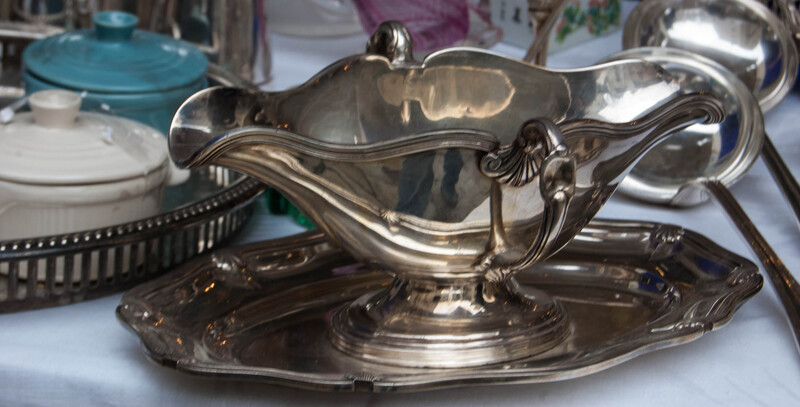The Art of Upcycling: Craft Beautiful Objects from What You Throw Away
In a world where sustainability and creativity collide, upcycling has emerged as both an eco-friendly solution to waste and a source of unique, artistic expression. If you have ever wondered if your trash can be transformed into treasured items, this comprehensive guide will reveal the magic behind the art of upcycling and inspire you to start crafting beautiful objects from what you throw away.
What Is Upcycling?
The concept of upcycling is simple but powerful. Unlike recycling--which breaks down materials to create new ones--upcycling breathes new life into discarded items without degrading their quality. It's all about transforming waste into value, reimagining objects that might otherwise end up in a landfill.
- Upcycling focuses on reusing materials in their current form.
- It often involves creativity and craftsmanship.
- It reduces environmental impact by minimizing waste.
- Each upcycled creation is unique and personalized.
Whether you refer to it as upcycling, creative reuse, or eco-crafting, all these terms revolve around giving ordinary items an extraordinary new purpose.

Why Embrace the Art of Upcycling?
Environmental Benefits
Environmental sustainability is one of the major motivations for joining the upcycling movement. Every item upcycled is an item kept out of landfills. By reducing overall waste, conserving natural resources, and lowering greenhouse gas emissions associated with manufacturing, upcycling is a practical step toward a greener planet.
Economic Advantages
Upcycling isn't just good for the planet--it's gentle on your wallet, too. Reusing materials you already have means you spend less on buying new supplies. This is especially beneficial for crafters, small businesses, and anyone looking to add personal flair to their home decor on a budget.
Cultivating Creativity and Expression
The limitations of available materials often spark innovation and originality. Upcycling pushes you to see the creative potential in everyday items, leading to one-of-a-kind projects that showcase your personality and ingenuity.
- Boosts artistic skills by challenging conventional design thinking
- Makes crafting accessible for all skill levels
- Encourages problem-solving and resourcefulness
Upcycling vs Recycling: Understanding the Difference
While both upcycling and recycling aim to reduce waste, they operate differently. Recycling breaks materials down, often resulting in lower-quality products (downcycling), whereas upcycling retains or even enhances the value of the original item.
| Upcycling | Recycling |
|---|---|
| Maintains or improves quality | Often downcycles, leading to lower-quality materials |
| Encourages creativity and innovation | Industrial process, limited by facility capabilities |
| Involves little to no energy consumption | Requires energy-intensive processing |
| Creates unique, personalized items | Produces standardized raw materials |
Common Materials to Upcycle
Almost anything destined for the trash can instead become a canvas for your next upcycled craft. Here are some of the most accessible and versatile materials you can start with:
- Glass jars (from sauces, jams, etc.)
- Plastic bottles and containers
- Cardboard (boxes, tubes)
- Old textiles (T-shirts, jeans, curtains)
- Metal cans
- Wood scraps
- Paper (magazines, newspapers, books)
- Wine corks
- Electronics parts
- Pallets and crates
- Furniture (broken or outdated pieces)
Pro Tip:
*Always clean and dry your materials before upcycling to ensure the best results and longevity for your finished piece.*
Creative Upcycling Project Ideas
1. Turn Glass Jars into Stylish Organizers
- Desk storage: Paint or decorate jars to hold pens, brushes, and small office supplies.
- Kitchen canisters: Use labeled jars for storing dry goods, spices, or snacks.
- Planters or vases: Give your houseplants or bouquets a new home.
2. Transform Old T-Shirts into Reusable Bags
Give worn-out T-shirts a second life by cutting and sewing them into eco-friendly tote bags. No sewing machine? Search for no-sew upcycling tutorials that use only scissors and knots.
3. Upcycle Pallets into Rustic Furniture
- Outdoor tables, benches, or shelves crafted from sturdy pallet wood
- Planter boxes for your garden
- Wall art using pallet boards for a farmhouse feel
4. Revamp Tin Cans into Lanterns or Planters
- Punch holes in clean tin cans, add a candle or LED light, and hang outdoors for magical lanterns
- Painted cans can serve as quirky plant pots or utensil holders
5. Repurpose Wine Corks into Creative Crafts
- Coasters, trivets, or bulletin boards made by gluing wine corks together
- Decorative wreaths for holidays or seasons
Steps to Mastering the Art of Upcycling
Step 1: Collect and Clean Your Materials
Get into the habit of saving glass jars, fabric scraps, boxes, tins, and other items that could be creatively reused. Wash, dry, and sort everything by type for easy access.
Step 2: Gather Essential Tools
- Scissors and craft knives
- Glue and adhesives
- Acrylic paints, brushes, and markers
- Sandpaper, screwdrivers, and small hardware
- Sewing kit (needle, thread, machine if desired)
Step 3: Get Inspired and Plan Your Project
Browse online galleries, Pinterest, Instagram, or DIY blogs for unique upcycling ideas. Sketch out a plan and assemble the materials you'll need.
Step 4: Start Crafting
Let your creativity take over! Experiment with different techniques, such as painting, sewing, gluing, or assembling, depending on your chosen project.
Step 5: Finishing Touches
Add decorative details, labels, and finishing coats to protect your creation. Show off your work by gifting it, using it at home, or even selling it at craft fairs or online.
Tips for Successful Upcycling
- Start small. Easy projects reduce overwhelm and build confidence.
- Focus on function and aesthetics. Upcycling should create something useful and beautiful.
- Be patient. Some materials may need added prep, like sanding or priming.
- Share with others. Offer workshops or tutorials to encourage more people to embrace creative reuse.
- Practice safety. Use caution with sharp tools, adhesives, and any potentially hazardous materials.
Artistic Upcycling: Making Masterpieces from Waste
The artistic side of upcycling shines in sculptures, installations, or functional art that challenge our perception of waste. Global artists have used the concept to highlight environmental issues, demonstrating that discarded items can be transformed into awe-inspiring masterpieces.
- Sculptures made from scrap metal or plastic, addressing ocean pollution
- Mosaic art created from broken ceramics
- Textile wall hangings assembled from old clothes, telling community stories
Artistic upcycling isn't limited to professionals; anyone can experiment on a small or large scale. Local galleries, community centers, and online exhibitions may showcase upcycled art and inspire you to try your hand.
How to Incorporate Upcycled Objects into Your Everyday Life
- Home decor: Upcycle old mirrors, picture frames, and vases for a personalized touch.
- Gifts: Handcrafted upcycled items make thoughtful and sustainable presents.
- Fashion: Turn old jeans into stylish shorts or bags, or patchwork jackets from fabric remnants.
- Organization: Use cleaned jars, tins, and boxes for stylish and eco-friendly storage.
Upcycled objects are conversation starters, often carrying stories about their previous lives and the creativity involved in their transformation.
Teaching Kids the Joy of Upcycling
Upcycling can be a fun and educational family activity. Involving children in creative reuse projects teaches valuable lessons about sustainability, resourcefulness, and problem-solving. Plus, it encourages a lifelong respect for nature and a habit of mindful consumption.
- Easy crafts: Create masks, animals, or models from toilet paper rolls and cereal boxes.
- Learning through play: Transform packaging into homemade board games or puzzles.

The Future of Upcycling and Sustainable Crafting
As the world moves toward a more sustainable future, the art of upcycling will continue to evolve. More designers and companies are integrating upcycled materials into their products, and makerspaces are supporting innovators with tools and community. With growing awareness and creativity, upcycling will remain a powerful force for environmental change and self-expression.
Trends to Watch:
- Tech-enabled upcycling: Using 3D printing and digital design to repurpose plastic waste.
- Collaborative projects: Community upcycling events to address local waste issues.
- Corporate adoption: Brands using upcycled materials for product lines and packaging.
- Educational integration: Schools teaching upcycling as part of environmental science or art curriculums.
Conclusion: Discover the Joy and Impact of Upcycling
The art of upcycling is more than just a way to reduce waste--it's a movement that invites us to be resourceful, creative, and conscious consumers. Every upcycled project, big or small, helps to protect our planet and brings beauty into our lives. Whether you are just starting or a seasoned maker, the potential of what you can create is truly endless. Take a second look at what you're about to throw away--it could become your next masterpiece!
Ready to Begin?
Start exploring the art of upcycling today and join the growing community of creative environmentalists turning trash into treasure. Share your unique creations online, inspire others, and make a positive difference--one beautiful, upcycled object at a time!